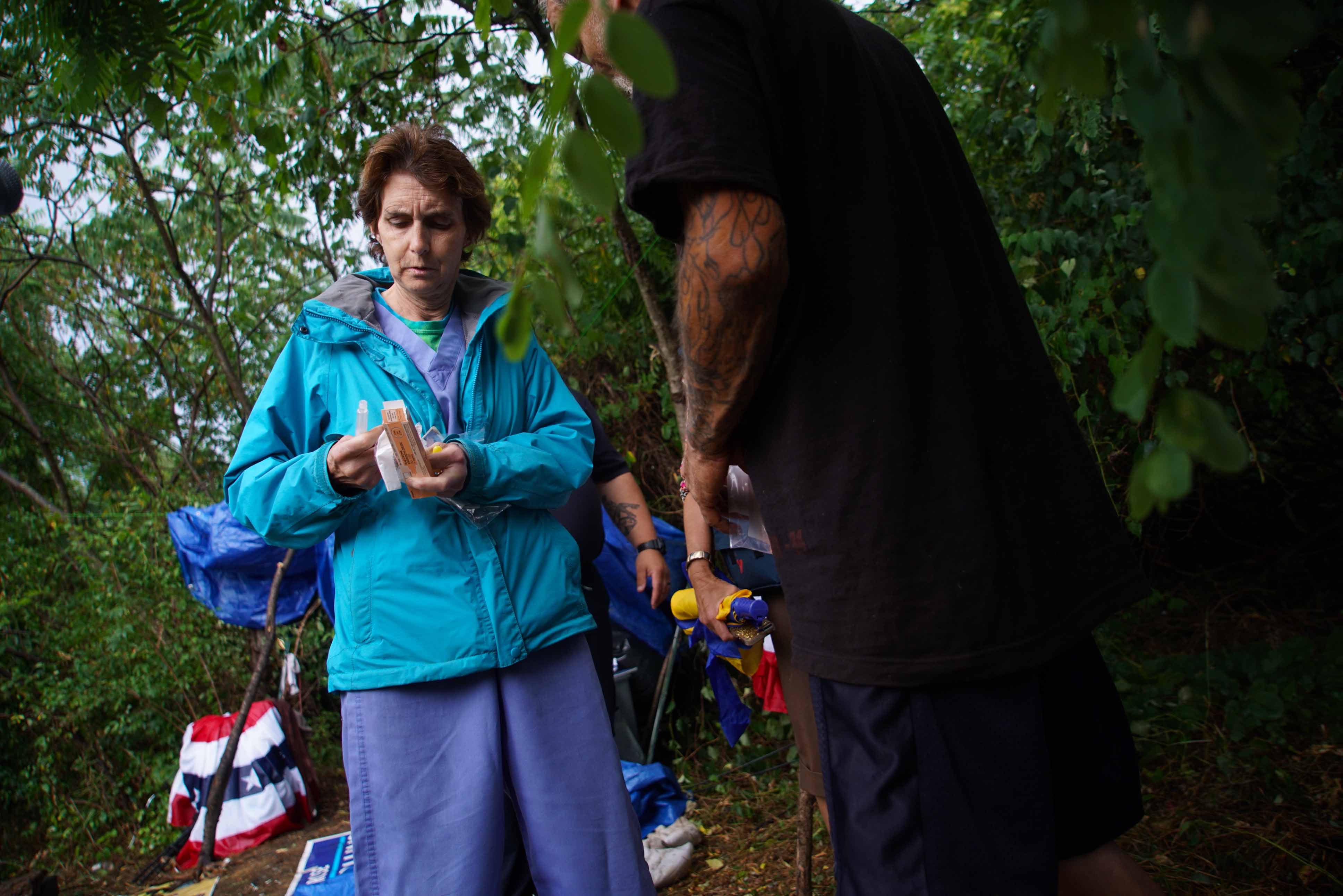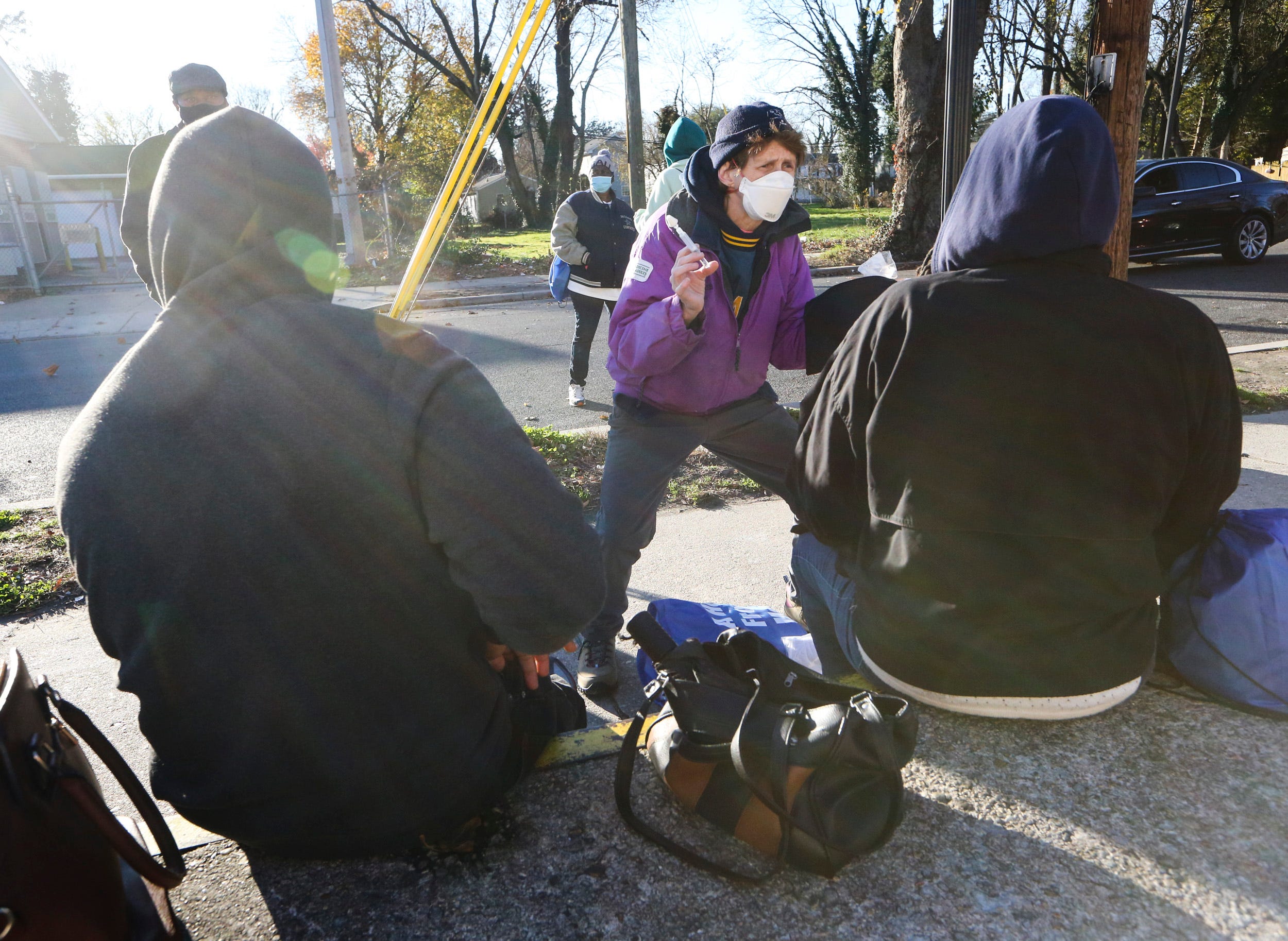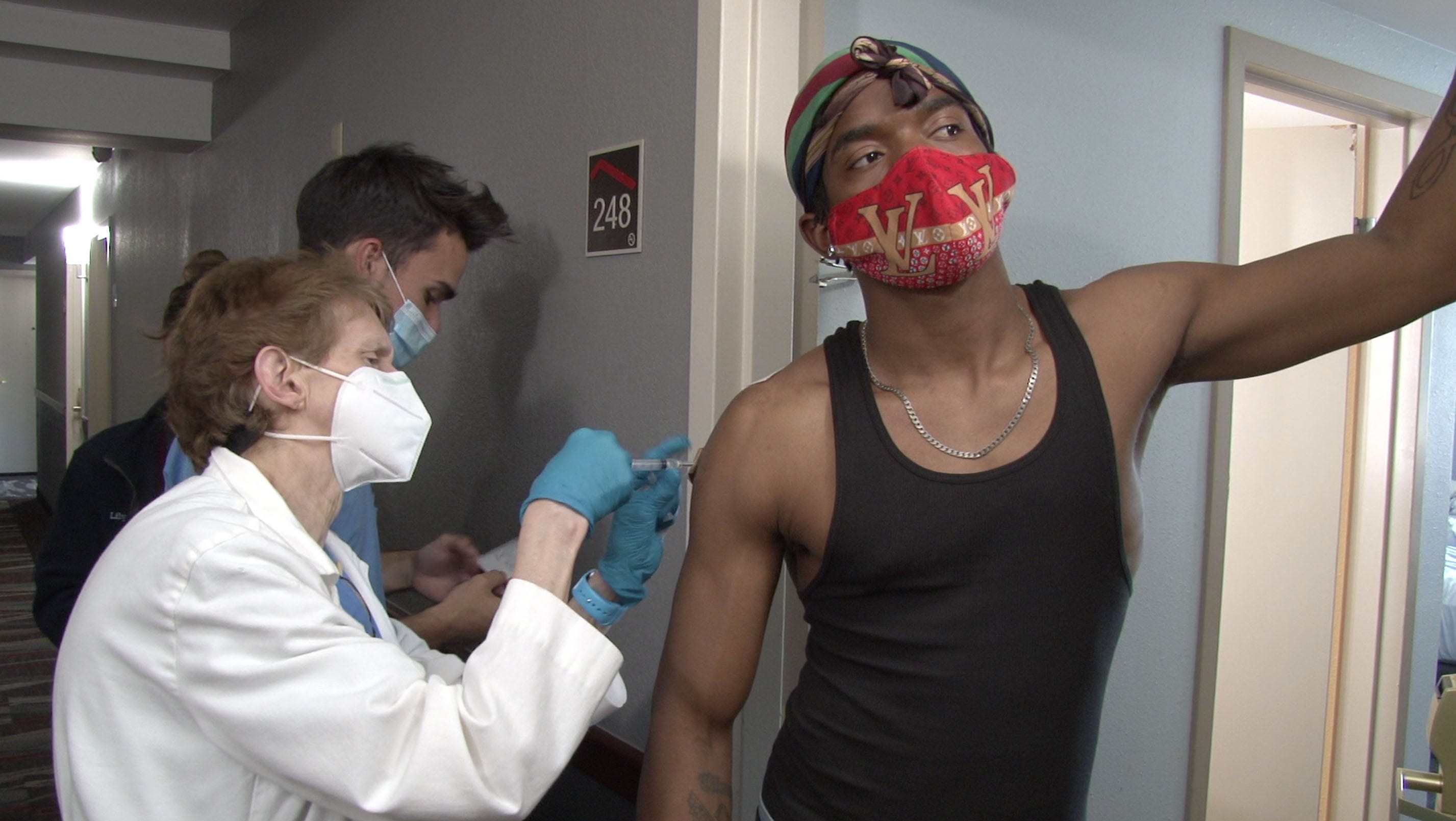Dr. Sandra Gibney is one of USA TODAY’s Women of the Year, a recognition of women across the country who have made a significant impact. The annual program is a continuation of Women of the Century, a 2020 project that commemorated the 100th anniversary of women gaining the right to vote. Meet this year’s honorees at womenoftheyear.usatoday.com.
Some know her as “Dr. G.” Others affectionately call her “Sandy.”
But even more recognize her as the petite doctor with colorful running shoes who never seems to slow down.
It’s this energy, first channeled in a Wilmington emergency room, that drove Dr. Sandra Gibney to take to the city’s streets after overdose deaths at homeless encampments rattled the longtime doctor.
Now, Gibney is a recognized figure in some of Delaware’s most underserved neighborhoods, places where you don’t often see white doctors leading outreach efforts to ensure those struggling with addiction and homelessness have both support and resources. She’s also one of USA TODAY’s Women of the Year, recognized for her work in Delaware.
When she’s not working weekends at the Newark 24/7 Urgent Care Center, Gibney is pushing for change with the state’s Behavioral Health Consortium, where she serves as chair of the access and treatment committee or helping to put those efforts into practice in the community.
When the COVID-19 pandemic hit, Gibney’s focus pivoted from distributing the overdose-reversing medication, naloxone, to those most in need, but also setting up sites for testing – and eventually vaccinating – against COVID-19.
When asked for a title, Gibney groans. She’s had many over the years and continues to add to her list, including serving as the medical director at the New Castle County Hope Center, a former hotel that was outfitted and turned into a shelter during the pandemic.
But they don’t define her, she said, and she doesn’t want them to, either.
“I don’t want to get so rooted that I miss the trend,” Gibney said of the slew of issues she is always tackling through her outreach work.
When it really comes down to it, though, there’s one title Gibney shares freely and proudly – one that came long before her medical and service accolades.
It’s arguably her favorite, too: “Mary Rita Gibney’s daughter.”
This conversation has been edited for length and clarity.
Delaware honoree of USA TODAY’s Women of the Year: Dr. Sandra Gibney
Jerry Habraken, Delaware News Journal

My mom, first and foremost. From an early age, she instilled that we give back and that we were fortunate. We weren’t rich but she gave a sense of paying it forward, to give back and have gratitude for what you have.
The reward is what you get when people say thank you so much. I’m not going to lie and say what I do doesn’t give me more than I give back. The love that I receive, it’s hundreds fold. I get it back and it’s almost like it’s an addiction for me to get that, to help people. I need them to need me and appreciate how I can help in any way I can. It’s about needing to help and feel like I made my mom proud, to follow her example and to pay her example about kindness.

Jennifer Corbett, The News Journal

I’m not going to say there wasn’t a piece of my dad’s alcoholism that flavored my passion for understanding the disease process and understanding the downstream effects of those affected by the addiction. For me, it also molded me – partly to say I’m not going to be like that.
Underneath all of these people that are struggling are really, really great people. I think people tell you any journey is going to take twists and turns. It’s what you do with it.

There have been victories that stand out more than others and there’s been heartache that stands out in the journey more than others. When I stepped outside of the ER, and now stepped out of Urgent Care, is when I fulfilled my destiny, I feel. If I stayed in the ER, I would have saved a few lives in the [emergency department], but when I stepped away from the ED and looked at the bigger picture outside of that hospital wall, is when I think I really found the most fulfilling destiny for me.
It’s because I became a doctor of the people and not a doctor of an institution. I’m a doctor of the community. I bring medicine to people in terms that they can understand. I bring information with love so that they can appreciate it in a different fashion. I will always go to them because I know they can’t always come to me.

Don’t accept no. Do not take no as a final answer because you will be given no thousands of times in your career. Don’t accept that. Don’t claim that. They say well-behaved women seldom make history. Well, I’m not trying to make history but I’m not trying to be thwarted by no.

For me, I think the best thing I’ve been able to do is mentor these medical students. (Gibney works with University of Delaware students studying the medical field at the Newark 24/7 Urgent Care Center, and through her outreach, they often join her in underserved Delaware communities.) I’ve got about 75 that volunteer to be with me. They love being part of it and love being part of that community. That’ll change our future physicians. They get to see how natural it is to be with them, a part of them. It’s almost like a little tutorial in be kind and understanding. For those guys, that will be my legacy, these kids who are coming with me. That’s the best legacy, right?


Dr. Sandra Gibney gives instructions for Naloxone as she helps distribute the anti-overdose treatment to people congregating on South New Street just off the Dover downtown business district. Gibney administers a dose of the Johnson & Johnson COVID-19 to Alex Tillman in the doorway of his residence at the Red Roof Inn in Minquadale.
LEFT: Dr. Sandra Gibney gives instructions for Naloxone as she helps distribute the anti-overdose treatment to people congregating on South New Street just off the Dover downtown business district. RIGHT: Gibney administers a dose of the Johnson & Johnson COVID-19 to Alex Tillman in the doorway of his residence at the Red Roof Inn in Minquadale.
WILLIAM BRETZGER and DAMIAN GILETTO/DELAWARE NEWS JOURNAL

I would say don’t be afraid to go or do where your heart pulls you because you’ll be OK if your heart is in it. There’s a conventional yellow brick road and the yellow brick road for medicine leads to a certain kind of clinician. I chose not to take the yellow brick road later in my career, but earlier in my career, I wouldn’t have done that.
My younger self would have been afraid and worried that it wouldn’t have worked out, worried that I wouldn’t have a carer if I did that. Medicine is very dogmatic and quite regimented in how you do things; see one, do one, teach one. You become engrained in that kind of philosophy of how you do your life, structure your life… you just stay on that hamster wheel and do what people tell you. And at some point, you’re on that hamster wheel and you say, “Is this what I really love?”
For me, there was a point where I felt confident and bold and arrogant enough to step away. I have to do this. It’s kind of having, God’s got me, and intolerance to how things are. I couldn’t tolerate hearing people were dying of overdoses in homeless camps. I couldn’t tolerate it. That’s how this all began.

Jennifer Corbett, The News Journal

The last six or seven years have changed me and what I want to do with the rest of my life. This is my time. I’m not going to always be young enough and I’m finally not stupid enough. … I have a window of time to make a difference and I can’t let anything else impede upon that. This is my time.

Published
Updated